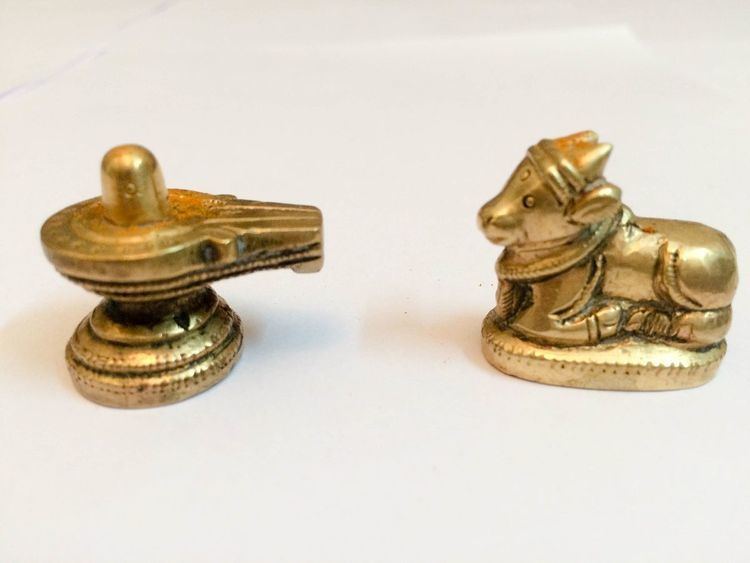 | ||
Sri Rudram (Sanskrit: श्री रुद्रम्), to which the Chamakam (Sanskrit: चमकम्) is added by scriptural tradition, is a Hindu stotra, hymn dedicated to Rudra (an epithet of Shiva), taken from the Yajurveda (TS 4.5, 4.7). Shri Rudram is also known as Sri Rudraprasna, Śatarudrīya, and Rudradhyaya. The text is important in Saivism where Shiva is viewed as the Supreme God. The hymn is an early example of enumerating the names of a deity, a tradition developed extensively in the sahasranama literature of Hinduism. By the first few centuries CE, the recitation of the Śatarudrīya is claimed, in the Jābala Upanishad, to lead to immortality. The hymn is referred to in the Shiva Purana.
Contents
The text is also famous for its mention of the Shaivite Panchakshara ("five-syllable") mantra (Sanskrit: Namaḥ Śivāya), which appears in the text of the Śatarudrīya in the eighth anuvaka. The text also contains the mantra Aum Namah Bhagavathe Rudraya. Through the chanting of Sri Rudram, Lord Shiva's various attributes and aspects are invoked and worshipped. Chanting the Rudram is considered to be of great benefit. The Rudram chanting can be done with or without the accompaniment of a Vedic yagna ritual. When accompanied with the Vedic fire ritual, it is called the Rudra Yagnam. It is said that Lord Shiva, after Bhasmasura was killed with the help of Lord Maha Vishnu, performed the Tandava Dance and then performed the "Rudra Yagna" for the betterment of humanity. The place where the Rudra Yagna was performed is where the "Sri Kalahasti" Temple stands now; this temple also has one of the 5 (Pancha bhootha - Vayu, Agni, Jala, Akash, Prithvi) lingas called Vayu v.
Text
It consists of two texts from book four of the Taittiriya Samhita (TS 4.5, 4.7), which is a recension of the Krishna Yajurveda.
Shri Rudram or the Namakam (chapter five) describes the name or epithets of Rudra, which represent his aspects. Additionally, the devotee asks for the benevolent aspect of Shiva to be invoked rather than the terrible aspect and requests forgiveness of sins. The Chamakam (chapter seven) asks for the fulfilment of wishes. Each part consist of eleven anuvaka or hymns. Traditionally Rudra is assigned the number 11, and among the thirty three deities of the Vedic pantheon, eleven are considered forms of Rudra.
Shri Rudram
The anuvakas of Shri Rudram correspond to the eleven hymns of TS 4.5, with the final anuvaka extended by an additional eight verses, including the Mahamrityunjaya Mantra. The central Shaivite mantra, Om Namah Sivaya is also derived from the Shri Rudram, it appears (without the om) in TS 4.5.8.l.
There are eleven hymns; each has its own purpose and meaning. For instance, the seventh anuvakam is for education, progeny; the eighth anuvakam is for destruction of enemies and possession of one's own things from them.
Chamakam
The second part of the text, corresponding to TS 4.7, asks God for fulfillment of wishes. The repeated phrase, cha mé literally means, "and to me [be this granted]", accompanied by a list of desirables, which are primarily necessary appurtenances for Vedic sacrifices.
The original context of the Chamakam is the piling up of the fire-altar of the Vedic religion. The hymn invokes, apart from Agni and Vishnu at the beginning, a pantheon of Vedic deities that are successively linked with Indra to enable the yajamana or sacrificer/patron to successfully perform Vedic fire sacrifices or yagnyas, such as the Agnishthoma, Somayaga, and the Ashwamedha. The Chamakam can be interpreted both as a preparatory for a physical external sacrificial ritual, and the inner, possibly yogic sacrifice involving pranic control, since the yogic "vital airs" are explicitly mentioned as sacrificial adjuncts in anuvaka, or stanza 10.
Interpretation
The President of the Ramakrishna Mission, at Chennai, in commentating on the foreword to Swami Amritananda's translation of Sri Rudram and Purushasuktam, stated that "Rudra to whom these prayers are addressed is not a sectarian deity, but the Supreme Being who is omnipresent and manifests Himself in a myriad forms for the sake of the diverse spiritual aspirants." Sri Rudram occurs in the fourth Kanda of the Taittirya Samhita in the Yajur Veda. It is a preeminent Vedic hymn to Lord Shiva as the God of dissolution, chanted daily in Shiva temples throughout India."
Interpretation
The prayer depicts the diverse aspects of the Almighty. The Shri Rudram hymn is unique in that it shows the presence of divinity throughout the entire universe. We cannot confine the qualities of the divine to those that are favorable to us. The Lord is both garden and graveyard, the slayer and the most benevolent one. The Almighty is impartial and ubiquitous: A few hymns of Shri Rudram are shown and explained below :
